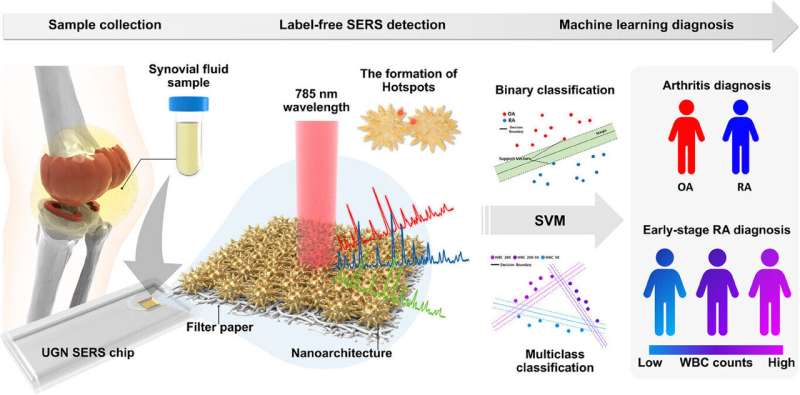According to some studies, over 50% of the population aged 65 and older experience symptoms of osteoarthritis, while rheumatoid arthritis is known to be a serious chronic disease that affects approximately one in 100 people over the course of their lifetime.
Although osteoarthritis and rheumatoid arthritis may appear similar, they differ in both their causes and treatments, making accurate differentiation at the early diagnosis stage critically important. Until now, diagnosis has relied on X-rays, MRI scans, and blood tests, which are time-consuming, costly, and limited in accuracy.
The human joints contain a fluid known as synovial fluid. The research team focused on the differences in the composition of metabolites—byproducts of chemical processes occurring within the body—present in this fluid. By analyzing these metabolic differences, they developed a technology capable of distinguishing between osteoarthritis and rheumatoid arthritis within 10 minutes, as well as assessing the severity of rheumatoid arthritis.

